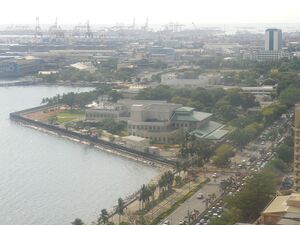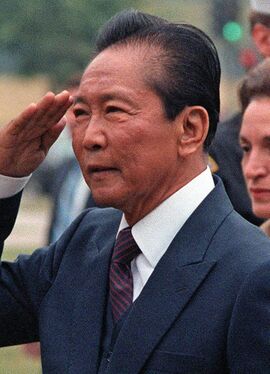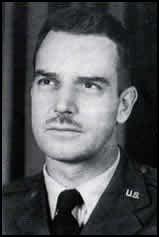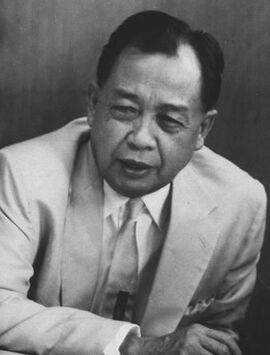Difference between revisions of "CIA/East Asia Division/Manila Station"
(stub) |
(better with sections) |
||
| (5 intermediate revisions by the same user not shown) | |||
| Line 1: | Line 1: | ||
{{group | {{group | ||
| − | |wikipedia= | + | |wikipedia=https://en.wikipedia.org/wiki/CIA_activities_in_the_Philippines |
|sourcewatch= | |sourcewatch= | ||
|constitutes=CIA station | |constitutes=CIA station | ||
|logo= | |logo= | ||
|start= | |start= | ||
| − | |description=The CIA's station | + | |description=The CIA's station handling activities in [[the Philippines]]. |
| − | | | + | |location=Manila,the Philippines |
|leaders=Manila Chief of Station | |leaders=Manila Chief of Station | ||
|website= | |website= | ||
| Line 12: | Line 12: | ||
|num_staff= | |num_staff= | ||
|members= | |members= | ||
| − | }} | + | }}''See also [[US/Ambassador/Philippines]] and the main article for [[the Philippines]]'' |
| − | The [[CIA station]] | + | The '''Manila CIA station''' handles activities in [[the Philippines]], directed by the [[Manila Chief of Station]]. |
| + | |||
| + | The CIA in the Philippines has engaged in a large number covert operations for intervention and dirty tricks particularly in Philippine domestic politic, including for several decades propping up president [[Ferdinand Marcos]]. For a long time, [[Manila]] has been the main station, if not the regional headquarters, of the [[Central Intelligence Agency]] for [[Southeast Asia]]. | ||
| + | |||
| + | From the beginning of the 20th century to [[1992]], there were [[U.S. military bases]] in the Philippines, creating infrastructure for control over the island nation. | ||
| + | |||
| + | ==CIA activities in the Philippines== | ||
| + | [[Roland G. Simbulan]], faculty at the [[University of the Philippines]] has researched the CIA in the Philippines extensiveness. The following overview is largely based on a lecture of his. | ||
| + | |||
| + | ===Front organization and covers=== | ||
| + | [[image:US Embassy Manila.jpg|thumb|right|the US embassy in Manila, where many CIA operatives are based under [[diplomatic cover]]]] | ||
| + | The [[US/Ambassador/Philippines|U.S. diplomatic mission]], especially the political section, is a favorite cover for many CIA operatives. [[CIA front companies]] also provide an additional layer of cover for operatives assigned overseas. | ||
| + | |||
| + | [[Desmond Fitzgerald]], a former CIA chief of station in [[Manila]] fronted as a legitimate businessman of an American [[multinational company]]. [[Joseph Smith]], a top CIA operative assigned to the Philippines in the early [[1960s]], posed as a "civilian employee" of the [[Clark Air Force Base]]'s 13th Air Force Southeast Asia Regional Survey Unit. CIA operative [[Gabriel Kaplan]]'s initial cover was more "civilian" - with the CIA-created [[Asia Foundation]], then later as a resident director of another CIA creation, the Philippine Action in Development, Reconstruction and Education (COMPADRE).<ref name=cenpeg/> | ||
| + | |||
| + | CIA operative [[David Sternberg]] fronted as a foreign correspondent for the American newspaper ''[[Christian Science Monitor]]'' when he assisted Gabriel Kaplan in managing the presidential campaign of [[Ramon Magsaysay]] in the [[1950s]].<ref name=cenpeg/> | ||
| + | |||
| + | ===Human intelligence=== | ||
| + | [[image:Ferdinand Marcos (cropped).jpg|thumb|left|270px|President [[Ferdinand Marcos]]]] | ||
| + | CIA human intelligence assets in Manila are said to have provided vital information at crucial times. According to declassified documents under the [[Freedom of Information Act]], on Sept. 17, [[1972]], a [[CIA asset]] in the Philippines who was in the inner circle of [[Ferdinand Marcos|Marcos]] informed the CIA station in Manila that Ferdinand Marcos was planning to proclaim [[martial law]] on Sept. 21, 1972. The CIA station in Manila was also provided an advance copy of Proclamation 1081 – the proclamation that declared martial law in the country - and a list of the individuals whom Marcos planned to arrest and imprison upon the declaration of martial rule. | ||
| + | |||
| + | So accurate was the CIA's assessment about the Sept. 21, 1972 declaration of martial rule that it boosted the prestige of the CIA station in Manila. Upon his retirement a few years later, [[Henry Byroade]], the American ambassador to Manila when martial law was declared, was honored by the CIA headquarters in [[Langley, Virginia]] -- a tribute that is said to be very rarely given to any retiring ambassador. Also, in [[1982]], the CIA was able to verify from a high-ranking Philippine immigration officer the names of the two [[doctors]] who visited the Philippines to treat Marcos for [[kidney failure]], giving the CIA a clear picture of Marcos's health problems.<ref name=cenpeg/> | ||
| + | |||
| + | ===President Ramon Magsaysay=== | ||
| + | [[image:Edward Lansdale.jpg|left|thumb|270px|Col. Edward Lansdale]] | ||
| + | The loss of the U.S. bases in the Philippines in 1992 was a tremendous blow to the CIA's Asian infrastructure. From the mid-[[1950s]], the U.S. bases in the Philippines served as operational headquarters for "[[Operation Brotherhood]]" which operated in [[Indochina]] under the direct supervision of the CIA's Col. [[Edward Lansdale]] and [[Lucien Conen]], and it involved several Filipinos who were recruited and trained by the CIA. Lansdale was even appointed by former President Ramon Magsaysay as his "[[military adviser]]" and was, in fact, his [[speechwriter]] as well, who determined Magsaysay's foreign and military policy. So successful was the CIA in pulling the strings through Lansdale that in 1954, a high level U.S. committee reported that, "American policy in [[Southeast Asia]] was most effectively represented in the Philippines, where any expanded program of Western influence may best be launched."<ref name=cenpeg/> | ||
| + | |||
| + | ===Base for Indonesian activities=== | ||
| + | The CIA also actively used Philippine territory, particularly [[Clark Air Base]], for the training and launching of operatives and logistics in the late 1950s, where the U.S. covertly supported dissident [[Indonesian]] colonels in the failed armed overthrow of Indonesian President [[Sukarno]]. The CIA then established supply, training and logistical bases on several islands in the Philippines. A CIA-owned proprietary company, the [[Civil Air Transport]], was actively used by the CIA from Philippine territory to give direct assistance to Indonesian military rebel groups attempting to overthrow the Indonesian nationalist President Sukarno in the late 1950s.<ref name=cenpeg/> | ||
| + | |||
| + | ===Repressing rebellions=== | ||
| + | From the late 1940s, U.S. military advisers of the Joint U.S. Military Advisory Group (JUSMAG) and the CIA station in Manila designed and led the bloody suppression of the peasant-based [[Huk rebellion]], which was vehemently opposed to the post-war Parity Rights amendment and the onerous military agreements with the United States. The CIA's success in crushing the rebellion in the [[1950s]] made this operation the model for future [[counterinsurgency]] operations in [[Vietnam]] and [[Latin America]]. Colonel Lansdale and his Filipino side-kick, Col. [[Napoleon Valeriano]], later used their counter-guerrilla experience in the Philippines for training covert operatives in [[Vietnam]] and in the U.S.-administered [[School of the Americas]], which trained counter-guerrilla assassins for Latin America. Thus, the Philippines had become the CIA's prototype in successful covert operations and psychological warfare.<ref name=cenpeg/> | ||
| + | |||
| + | In the late 1980s, the CIA assigned Vietnam veteran U.S. General [[John Singlaub]] to organize [[anti-communist]] vigilante groups all over the country for mass terror, particularly as part of the Philippine government's "total war policy" against people's movements.<ref name=cenpeg/> | ||
| + | |||
| + | ==="Neutralizing" dissidents=== | ||
| + | [[image:Claro Mayo Recto.jpg|thumb|right|270px|Claro M. Recto]] | ||
| + | The CIA's actions and activities in its Manila station have never been limited to information gathering. Information gathering is but a part of an offensive strategy to attack, neutralize and undermine any organization, institution, personality or activity they consider a danger to the stability and power of the United States. The late nationalist Senator [[Claro M. Recto]] in the 1950s was believed to have been a victim of the CIA's dirty tricks department because of his staunch crusade against the U.S. military bases in the Philippines and advocacy for an independent economic and foreign policy for the Philippines. General [[Ralph B. Lovett]], then the CIA station chief in Manila and the U.S. ambassador Admiral [[Raymond A. Spruance]] discussed a plan to [[assassinate]] Recto using a vial of [[poison]]. A few years later, Recto was to die mysteriously of [[heart attack]] (though he had no known heart ailment) in [[Rome]] after an appointment with two Caucasians in business suits.<ref name=cenpeg/> | ||
| + | |||
| + | ===Honey Traps=== | ||
| + | A former junior case officer of the CIA, [[Janine Brookner]], who was stationed in Manila in the late 60s and 70s, described the capital city of the Philippines as "a wild place" for CIA operatives who spent a lot of time in bars, sex shows and [[brothels]]. This was because, according to her, the standard CIA procedure for [[recruiting]] targets was "to get him drunk, get him laid, and then get him on the Agency's dole". Brookner was an attractive but determined blonde who claimed to have developed assets in both the government and the [[Philippine Communist Party]] during her assignment to the Philippines. Brookner was also a very productive recruiter who, as a handler of important assets and as a CIA case officer, claims to be able to make her targets confess everything. "You take care of them," Brookner recalls," and they tell you their fears and nightmares...I'm good at people depending on me." In fact, she was often propositioned by her targets, especially high-ranking Philippine government officials.<ref name=cenpeg/> | ||
| + | |||
| + | ===Propaganda central=== | ||
| + | The "Regional Service Center" (RSC) in Manila at the Seafront Compound about a mile south from the U.S. Embassy, fronts as a facility of the [[United States Information Service]] (USIS), formerly called the U.S. International Communications Agency. This ultra-modern printing facility functions as a secret CIA propaganda plant. It has the ability to produce large quantities of high-quality color offset magazines, posters, leaflets and the like in at least 14 Asian languages.<ref name=cenpeg/> | ||
| + | |||
| + | During the early [[1970s]], the CIA station at the U.S. Embassy in [[Manila]], [[the Philippines]] printed up [[Money/Counterfeiting|counterfeit U.S. dollars]] which were used not only for [[bribery]] and other payments to agents but also for expenses for which the station was hesitant to request funds from headquarters.<ref>https://archive.org/details/CovertActionInformationBulletinIssue13JulyAugust1981TheUSAndAfrica/page/n19/mode/2up page 21</ref> | ||
| + | |||
| + | ===Post-Marcos=== | ||
| + | Following the 1986 ouster of Marcos, the U.S. set about to transform the "new" [[Philippines/Military|Armed Forces of the Philippines]] (AFP) into an effective [[counterinsurgency]] force that would integrate military, political, economic and social initiatives, including broad "civic action" campaigns, [[psychological operations]], military aid and training. Between 1987-1990, Washington reportedly authorized stepped-up clandestine CIA operations against the Philippine Left, including a US$10 million allocation to the AFP for enhanced intelligence-gathering operations. There was also an increase in the number of CIA personnel, from 115 to 127, mostly attached as "[[diplomats]]" to the U.S. Embassy in Manila.<ref name=cenpeg/> | ||
| + | |||
| + | ===Controlling opposition=== | ||
| + | The CIA has long utilized in the Philippines sophisticated or subtle means for clandestine [[propaganda]], such as the manipulation of [[trade unions]] and [[cultural organizations]], rather than heavy-handed activities such as [[paramilitary operations]], political assassinations and [[coups]] as they had done extensively in [[Africa]], [[Latin America]], and [[Vietnam]]. During an interview conducted by [[Roland G. Simbulan]] with [[Ralph McGehee]], a former CIA agent, and other former CIA operatives assigned to the Manila station, he was told that the CIA had many unheralded successes in the Philippines such as the manipulation of the trade union movement through the [[Asia-American Free Labor Institute]] (AAFLI) and through funds which were channeled through the [[USAID]], [[Asia Foundation]] and the [[National Endowment for Democracy]] (NED).<ref name=cenpeg/> | ||
| + | |||
| + | The CIA-linked Asia Foundation has long been active in the Philippines. It has generously funded academic seminars, researches, study tours, and conferences in most of the leading Philippine universities, most especially at the [[University of the Philippines]] (U.P.)<ref name=cenpeg>https://cenpeg.org/events/2017/apr2017/THE_CIA_IN_THE_PHILIPPINES_A_BRIEF_HISTORY.html</ref> | ||
{{SMWDocs}} | {{SMWDocs}} | ||
==References== | ==References== | ||
{{reflist}} | {{reflist}} | ||
| − | |||
Latest revision as of 23:14, 12 November 2024
(CIA station) | |
|---|---|
| Location | Manila, the Philippines |
| Leader | Manila Chief of Station |
| The CIA's station handling activities in the Philippines. | |
See also US/Ambassador/Philippines and the main article for the Philippines
The Manila CIA station handles activities in the Philippines, directed by the Manila Chief of Station.
The CIA in the Philippines has engaged in a large number covert operations for intervention and dirty tricks particularly in Philippine domestic politic, including for several decades propping up president Ferdinand Marcos. For a long time, Manila has been the main station, if not the regional headquarters, of the Central Intelligence Agency for Southeast Asia.
From the beginning of the 20th century to 1992, there were U.S. military bases in the Philippines, creating infrastructure for control over the island nation.
CIA activities in the Philippines
Roland G. Simbulan, faculty at the University of the Philippines has researched the CIA in the Philippines extensiveness. The following overview is largely based on a lecture of his.
Front organization and covers

The U.S. diplomatic mission, especially the political section, is a favorite cover for many CIA operatives. CIA front companies also provide an additional layer of cover for operatives assigned overseas.
Desmond Fitzgerald, a former CIA chief of station in Manila fronted as a legitimate businessman of an American multinational company. Joseph Smith, a top CIA operative assigned to the Philippines in the early 1960s, posed as a "civilian employee" of the Clark Air Force Base's 13th Air Force Southeast Asia Regional Survey Unit. CIA operative Gabriel Kaplan's initial cover was more "civilian" - with the CIA-created Asia Foundation, then later as a resident director of another CIA creation, the Philippine Action in Development, Reconstruction and Education (COMPADRE).[1]
CIA operative David Sternberg fronted as a foreign correspondent for the American newspaper Christian Science Monitor when he assisted Gabriel Kaplan in managing the presidential campaign of Ramon Magsaysay in the 1950s.[1]
Human intelligence

CIA human intelligence assets in Manila are said to have provided vital information at crucial times. According to declassified documents under the Freedom of Information Act, on Sept. 17, 1972, a CIA asset in the Philippines who was in the inner circle of Marcos informed the CIA station in Manila that Ferdinand Marcos was planning to proclaim martial law on Sept. 21, 1972. The CIA station in Manila was also provided an advance copy of Proclamation 1081 – the proclamation that declared martial law in the country - and a list of the individuals whom Marcos planned to arrest and imprison upon the declaration of martial rule.
So accurate was the CIA's assessment about the Sept. 21, 1972 declaration of martial rule that it boosted the prestige of the CIA station in Manila. Upon his retirement a few years later, Henry Byroade, the American ambassador to Manila when martial law was declared, was honored by the CIA headquarters in Langley, Virginia -- a tribute that is said to be very rarely given to any retiring ambassador. Also, in 1982, the CIA was able to verify from a high-ranking Philippine immigration officer the names of the two doctors who visited the Philippines to treat Marcos for kidney failure, giving the CIA a clear picture of Marcos's health problems.[1]
President Ramon Magsaysay
The loss of the U.S. bases in the Philippines in 1992 was a tremendous blow to the CIA's Asian infrastructure. From the mid-1950s, the U.S. bases in the Philippines served as operational headquarters for "Operation Brotherhood" which operated in Indochina under the direct supervision of the CIA's Col. Edward Lansdale and Lucien Conen, and it involved several Filipinos who were recruited and trained by the CIA. Lansdale was even appointed by former President Ramon Magsaysay as his "military adviser" and was, in fact, his speechwriter as well, who determined Magsaysay's foreign and military policy. So successful was the CIA in pulling the strings through Lansdale that in 1954, a high level U.S. committee reported that, "American policy in Southeast Asia was most effectively represented in the Philippines, where any expanded program of Western influence may best be launched."[1]
Base for Indonesian activities
The CIA also actively used Philippine territory, particularly Clark Air Base, for the training and launching of operatives and logistics in the late 1950s, where the U.S. covertly supported dissident Indonesian colonels in the failed armed overthrow of Indonesian President Sukarno. The CIA then established supply, training and logistical bases on several islands in the Philippines. A CIA-owned proprietary company, the Civil Air Transport, was actively used by the CIA from Philippine territory to give direct assistance to Indonesian military rebel groups attempting to overthrow the Indonesian nationalist President Sukarno in the late 1950s.[1]
Repressing rebellions
From the late 1940s, U.S. military advisers of the Joint U.S. Military Advisory Group (JUSMAG) and the CIA station in Manila designed and led the bloody suppression of the peasant-based Huk rebellion, which was vehemently opposed to the post-war Parity Rights amendment and the onerous military agreements with the United States. The CIA's success in crushing the rebellion in the 1950s made this operation the model for future counterinsurgency operations in Vietnam and Latin America. Colonel Lansdale and his Filipino side-kick, Col. Napoleon Valeriano, later used their counter-guerrilla experience in the Philippines for training covert operatives in Vietnam and in the U.S.-administered School of the Americas, which trained counter-guerrilla assassins for Latin America. Thus, the Philippines had become the CIA's prototype in successful covert operations and psychological warfare.[1]
In the late 1980s, the CIA assigned Vietnam veteran U.S. General John Singlaub to organize anti-communist vigilante groups all over the country for mass terror, particularly as part of the Philippine government's "total war policy" against people's movements.[1]
"Neutralizing" dissidents
The CIA's actions and activities in its Manila station have never been limited to information gathering. Information gathering is but a part of an offensive strategy to attack, neutralize and undermine any organization, institution, personality or activity they consider a danger to the stability and power of the United States. The late nationalist Senator Claro M. Recto in the 1950s was believed to have been a victim of the CIA's dirty tricks department because of his staunch crusade against the U.S. military bases in the Philippines and advocacy for an independent economic and foreign policy for the Philippines. General Ralph B. Lovett, then the CIA station chief in Manila and the U.S. ambassador Admiral Raymond A. Spruance discussed a plan to assassinate Recto using a vial of poison. A few years later, Recto was to die mysteriously of heart attack (though he had no known heart ailment) in Rome after an appointment with two Caucasians in business suits.[1]
Honey Traps
A former junior case officer of the CIA, Janine Brookner, who was stationed in Manila in the late 60s and 70s, described the capital city of the Philippines as "a wild place" for CIA operatives who spent a lot of time in bars, sex shows and brothels. This was because, according to her, the standard CIA procedure for recruiting targets was "to get him drunk, get him laid, and then get him on the Agency's dole". Brookner was an attractive but determined blonde who claimed to have developed assets in both the government and the Philippine Communist Party during her assignment to the Philippines. Brookner was also a very productive recruiter who, as a handler of important assets and as a CIA case officer, claims to be able to make her targets confess everything. "You take care of them," Brookner recalls," and they tell you their fears and nightmares...I'm good at people depending on me." In fact, she was often propositioned by her targets, especially high-ranking Philippine government officials.[1]
Propaganda central
The "Regional Service Center" (RSC) in Manila at the Seafront Compound about a mile south from the U.S. Embassy, fronts as a facility of the United States Information Service (USIS), formerly called the U.S. International Communications Agency. This ultra-modern printing facility functions as a secret CIA propaganda plant. It has the ability to produce large quantities of high-quality color offset magazines, posters, leaflets and the like in at least 14 Asian languages.[1]
During the early 1970s, the CIA station at the U.S. Embassy in Manila, the Philippines printed up counterfeit U.S. dollars which were used not only for bribery and other payments to agents but also for expenses for which the station was hesitant to request funds from headquarters.[2]
Post-Marcos
Following the 1986 ouster of Marcos, the U.S. set about to transform the "new" Armed Forces of the Philippines (AFP) into an effective counterinsurgency force that would integrate military, political, economic and social initiatives, including broad "civic action" campaigns, psychological operations, military aid and training. Between 1987-1990, Washington reportedly authorized stepped-up clandestine CIA operations against the Philippine Left, including a US$10 million allocation to the AFP for enhanced intelligence-gathering operations. There was also an increase in the number of CIA personnel, from 115 to 127, mostly attached as "diplomats" to the U.S. Embassy in Manila.[1]
Controlling opposition
The CIA has long utilized in the Philippines sophisticated or subtle means for clandestine propaganda, such as the manipulation of trade unions and cultural organizations, rather than heavy-handed activities such as paramilitary operations, political assassinations and coups as they had done extensively in Africa, Latin America, and Vietnam. During an interview conducted by Roland G. Simbulan with Ralph McGehee, a former CIA agent, and other former CIA operatives assigned to the Manila station, he was told that the CIA had many unheralded successes in the Philippines such as the manipulation of the trade union movement through the Asia-American Free Labor Institute (AAFLI) and through funds which were channeled through the USAID, Asia Foundation and the National Endowment for Democracy (NED).[1]
The CIA-linked Asia Foundation has long been active in the Philippines. It has generously funded academic seminars, researches, study tours, and conferences in most of the leading Philippine universities, most especially at the University of the Philippines (U.P.)[1]
Employees on Wikispooks
| Employee | Job | Appointed | End | Description |
|---|---|---|---|---|
| Desmond FitzGerald | Manila Chief of Station | 1955 | 1956 | |
| John H. Richardson Sr | Manila Chief of Station | 1958 | 1962 | Dates not confirmed |

